
VEITH symposium is one of the most authoritative, large-scale and long-standing academic events in vascular surgery in the world. Thousands of top experts from vascular surgery, interventional radiology, interventional cardiac surgery, and other vascular surgery fields from around the world attend the VEITH symposium conference each year. Here brings together various research data updates from the world, very pioneering, prospective and controversial topic discussion, clinical technology sharing with great application value, the latest and cutting-edge medical devices and technology exploration, face-to-face communication opportunities for world-class authoritative vascular surgery experts, and so on.
On November 14, 2023, during the International Congress of Vascular and Endovascular Angiology (VEITH symposium) held at the Hilton Hotel, New York Center, USA, Professor Xin Shijie from the First Affiliated Hospital of China Medical University gave a wonderful speech on the topic of "Current Research Situation of Abdominal Aortic Aneurysm in China".

Prof. Xin Shijie
The First Hospital of China Medical University
Epidemiology
From 2000 to 2010, the number of abdominal aortic aneurysm (AAA) cases in the United States showed a decreasing trend. The number of AAAs from CMU-1H (The First Hospital of China Medical University) has been increasing, which also represents a trend in China. Although there is no exact data, Professor Guo Wei from the First Medical Center of Chinese PLA General Hospital and I conducted regional screening for AAA in northeast and central China. The prevalence of abdominal aortic aneurysm in China accounted for 0.11% in 2014 and 0.9% in 2019. The prevalence and incidence of AAA worldwide were positively correlated with age. In addition, data from CMU-1H showed a new peak in patients aged 65 – 69 years and a tendency to be younger in China.
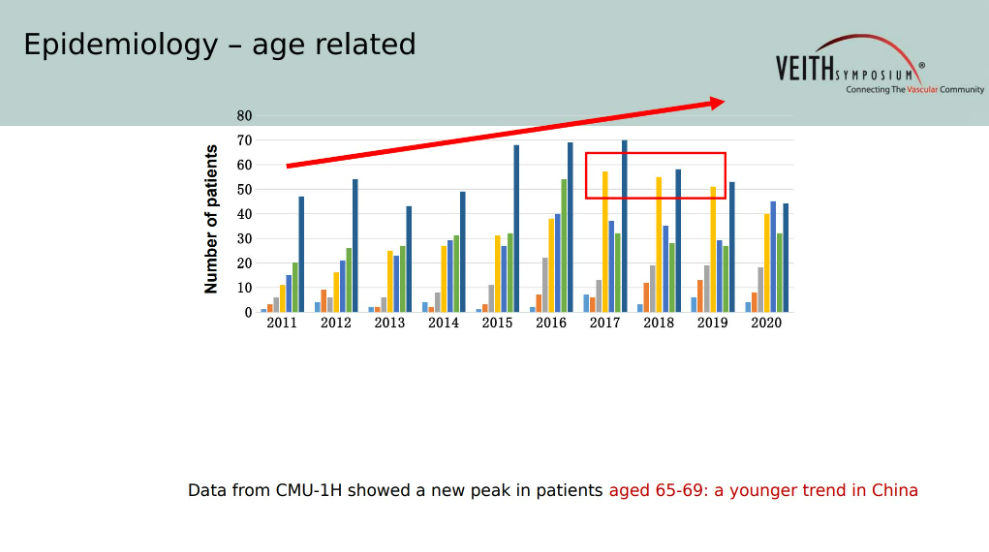
The causes of AAA can be summarized as follows: ① atherosclerosis and thrombosis; ② vascular cell senescence; ③ chronic aortic inflammation; ④ genetic and genetic defects; ④ infection; ③ inflammatory and autoimmune diseases.
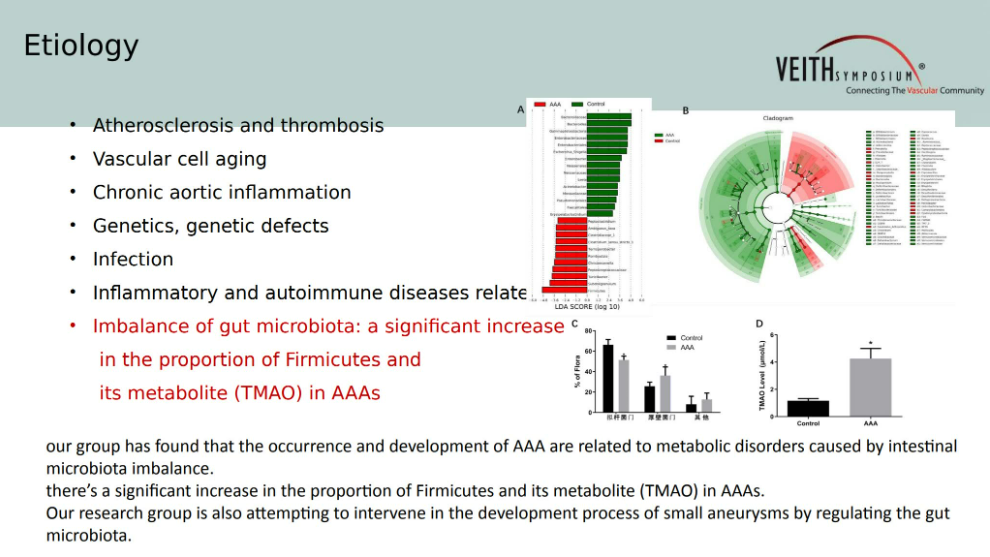
Treatment strategy for abdominal aortic aneurysm
In 1951, Professor Dubost performed the world 's first resection and graft treatment of AA, abdominal aortic aneurysm resection and transplantation, opening the era of abdominal aortic aneurysm surgery. Currently, with the development of endovascular techniques, surgical procedures are less and less used. A large number of guideline recommendations, including 2022ACC/AHA guidelines, 2019 European guidelines, and the latest Japanese JCS guidelines, tend to treat AAA endoluminally. In 2020, the NICE compass had no significant tendency to endoluminal or open, but open surgery was recommended for complex AAAs (combined with suprarenal vascular invasion, etc.) as well as young AAAs.
In the statistics of AAA treatment methods in various countries around the world, the proportion of surgical open surgery has been decreasing sharply year by year. In the United States, for example, open surgery accounted for 38.1% between 2005 and 2009, and only 10.5% after 2016. According to 2020 data in China, the proportion of open surgery in China has decreased to about 3.5%.
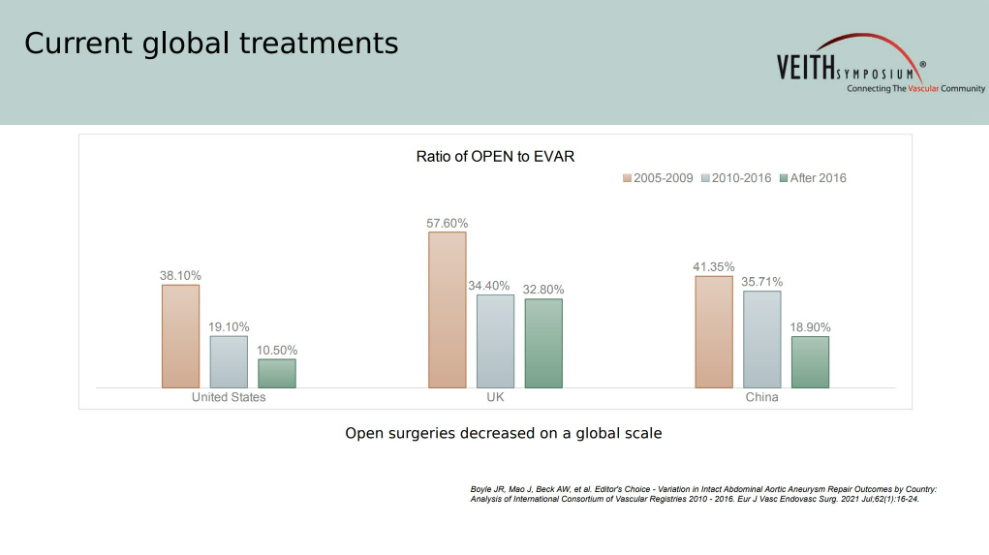
In recent years, EVAR surgery has also made rapid development in China, and the proportion of EVAR application in China is estimated to be more than 95%. Professor Xin Shijie has counted the number of open surgeries for AAA in China in 2020, and estimated that the proportion of open surgeries is less than 3.5% according to the number of artificial blood vessels used. Over the past 15 years, the proportion of EVAR in the First Hospital of China Medical University has also increased year by year, while the proportion of open surgery has decreased from 36% in 2009 to 11%.
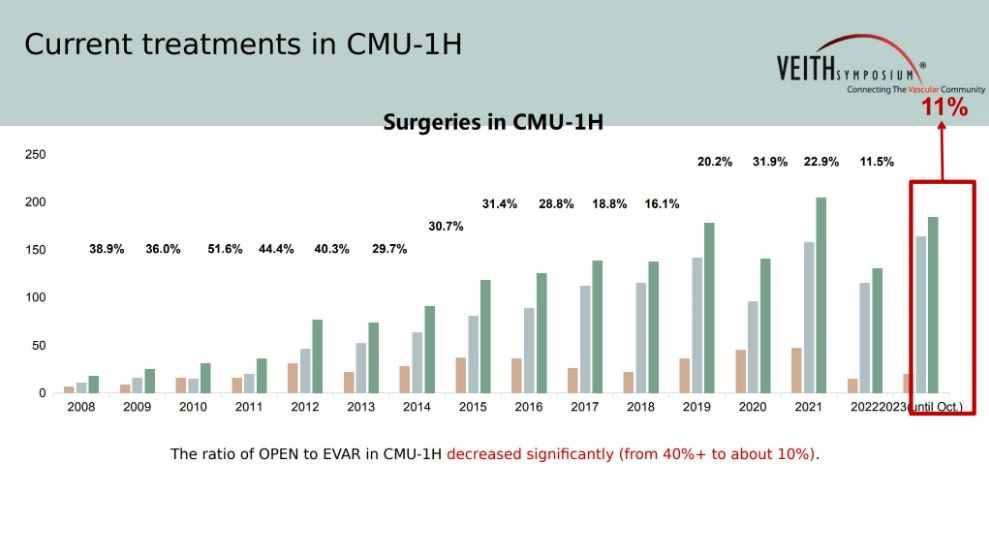
Although the proportion of endovascular treatment continues to grow, open surgery remains pivotal and irreplaceable. The First Hospital of China Medical University always insists on recommending open surgical treatment for some AAA patients suitable for open surgery (including combined gastrointestinal fistula, young patients, aortic hypoplasia, economic factors, infectious aneurysms).
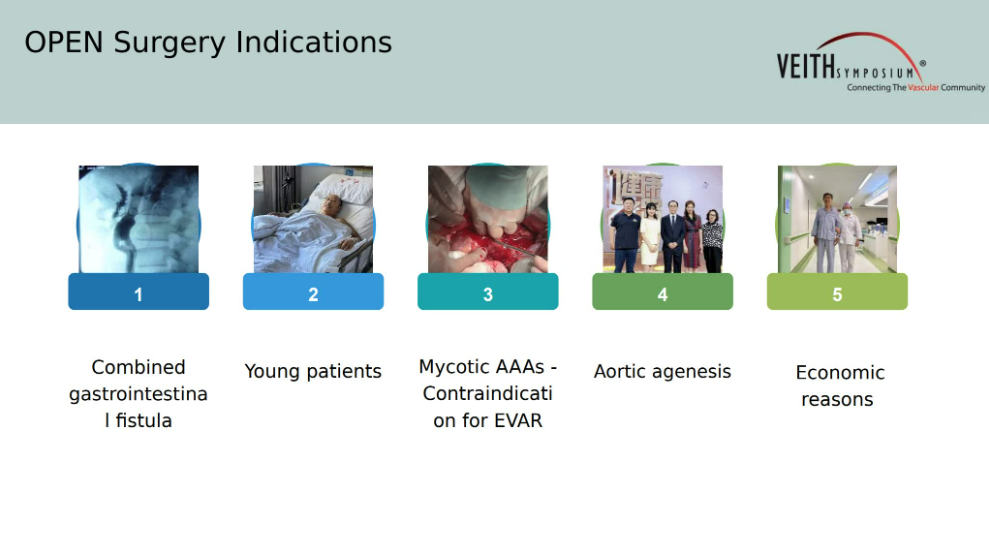
Development of domestic stents
At present, clinical domestic devices and imported devices are in use. However, imported devices rarely see the data related to abdominal aortic aneurysm. Domestic devices have many clinical data of abdominal aortic aneurysm in China. Therefore, most domestic devices will be designed according to the disease characteristics and lesion characteristics of Chinese. Although the research on domestic stents started relatively late, in recent years, with the continuous improvement of material technology and production level in China and the support of domestic substitution policies for medical devices, more and more products with certain design advantages have emerged continuously, reflecting a good application prospect.
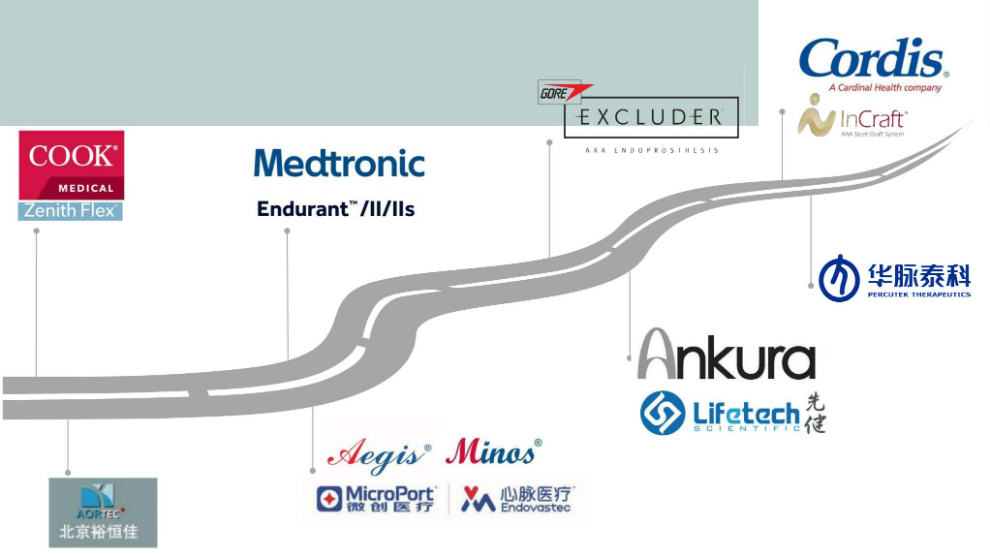
Innovative work for Chinese vascular surgeons
Professor Shu Chang from Fuwai Hospital, CAMS designed a customized multi-branch stent graft system for thoracoabdominal aortic diseases. The application of personalized customization and minimally invasive multi-branch reconstruction is expected to break technical barriers and reduce the cost of hospitalization for patients. Professor Guo Wei from the First Medical Center of Chinese PLA General Hospital designed and developed a splanchnic artery multi-branch reconstruction technique for TAAA and proximal AAA, G-branch and WeFlow-JAAA, which achieved good results and has entered phase III clinical trials.
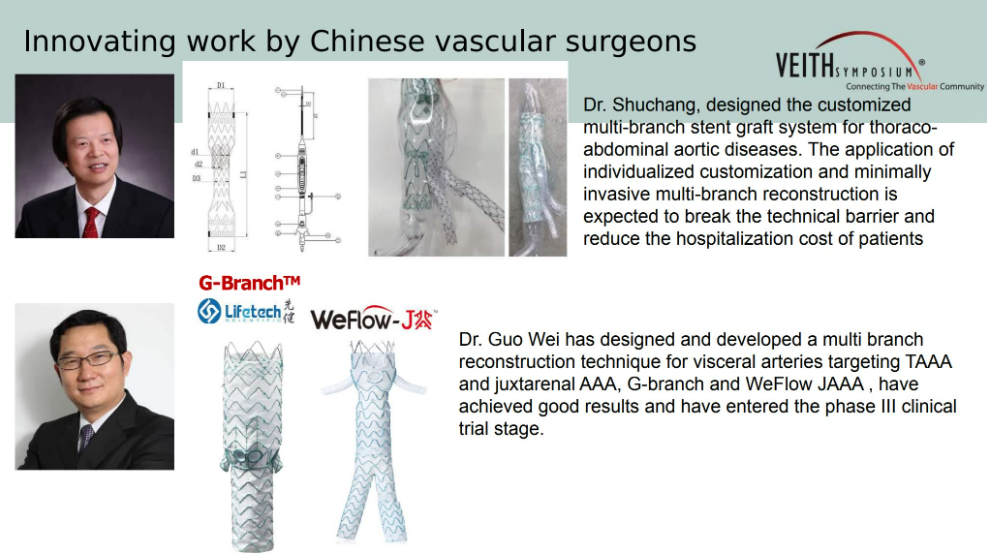
Our center also participated in the phase III clinical trial of Professor Guo Wei 's G-branch GUARATE study, and a total of 7 patients were enrolled. The GUARATEE study has included more than 100 patients and has achieved good clinical trial results. We look forward to the early launch and application of the system.
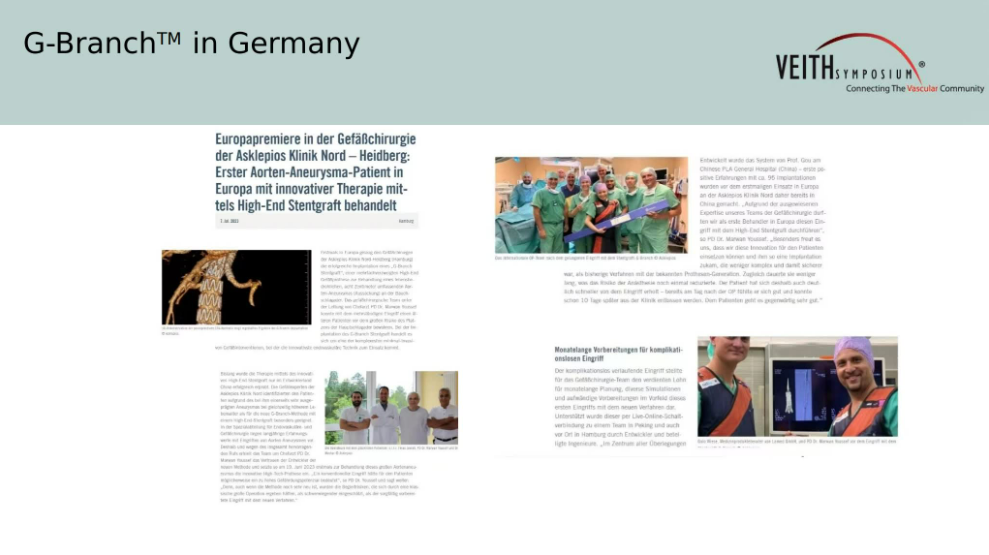
Summary
1, in China, the number of AAAs remains on the rise and shows a new peak at younger ages.
2, significant progress has been made in endovascular management and the development of stent grafts. Conventional stents have been widely used and new stent grafts are awaiting introduction.
3, open surgery still has its significance and irreplaceable status, but surgeons who master open surgery and EVAR alone are far from enough.


